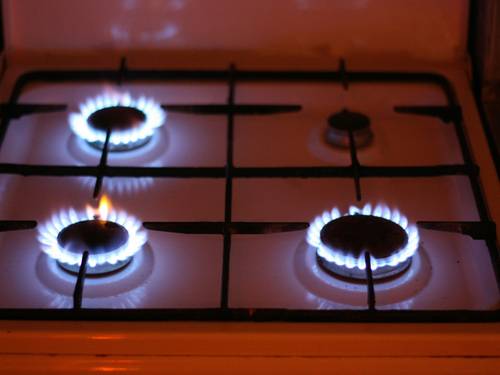
What Is an Electric Stove?
An electric stove is a plug-in heating appliance that uses electric resistance elements to produce heat—often simulating the appearance of a real fire with LED flames and glowing embers. Unlike wood, pellet, or gas stoves, electric stoves require no venting, fuel storage, or combustion, making them a safe and flexible heating option for almost any room.
- Fuel: Electricity from a standard 120V outlet
- Efficiency: ~100% (at point of use)
- Installation: No venting or chimney required
- Best For: Zone heating, rentals, apartments, supplemental comfort
How Electric Stoves Work
Electric stoves use internal heating elements—similar to space heaters—to produce radiant and/or fan-forced convection heat. Many models include LED flame effects for ambiance, with separate controls for heat and flame display. Simply plug the unit into a standard wall outlet, set your desired temperature or flame setting, and enjoy instant warmth with zero emissions or mess.
- Heating Elements: Provide fast, consistent heat output
- Fan (optional): Distributes heat more evenly in the room
- LED Flames: Imitate the look of a real fire for atmosphere
- Thermostat: Allows precise control of room temperature
- Remote Controls: Offer easy operation from across the room

Main Types of Electric Stoves
1. Freestanding Electric Stoves
These movable units resemble traditional wood or gas stoves, complete with decorative logs or coals, and can be placed almost anywhere with access to an outlet. Great for living rooms, bedrooms, sunrooms, or offices.
- Easy to relocate or reposition as needed
- No permanent installation or venting required
- Safe, cool-to-the-touch exteriors (in most models)
2. Electric Fireplace Inserts
Designed to fit inside existing fireplace openings, inserts modernize old hearths with efficient electric heat and realistic flame visuals. Many include remote controls and programmable timers.
- Upgrades an unused or decorative fireplace
- Zero emissions, ideal for apartments or rentals
- Simple setup—slides into place, plug in, and go
Advantages of Electric Stoves
- Simple Installation: No venting, gas lines, or chimney required
- Portability: Move from room to room as needed
- Instant On/Off: Immediate heat and flame effects, no warm-up or cooldown
- Safety: No open flames, smoke, or carbon monoxide risk
- Low Maintenance: No ash, soot, or fuel storage to manage
- Cost-Effective: Low upfront cost and no installation expenses
- Flexible Placement: Use in apartments, condos, basements, or offices
- Ambiance: Enjoy flame visuals year-round (heat can be turned off in summer)
- Accessible: Ideal for seniors, renters, and anyone wanting easy comfort
Electric Stove Installation & Safety

- Plug directly into a grounded, standard 120V wall outlet—avoid extension cords for safety
- Keep clear of curtains, furniture, or other combustibles (follow manufacturer’s clearance guidelines)
- Place on a flat, stable surface
- Do not use outdoors or in wet locations unless rated for such use
- Unplug unit before cleaning or moving
- Test safety features (tip-over switch, overheat protection) regularly
Electric Stove Efficiency & Costs
- 100% Efficient at Point of Use: All electricity consumed turns into usable heat (though generation/transmission losses may occur at the grid level)
- Ideal for Zone Heating: Heat just the rooms you use to save on whole-house heating bills
- Low Upfront Costs: No installation, venting, or fuel infrastructure needed—just plug and play
- Operating Costs: Depends on local electricity rates, but usually higher per BTU than gas or wood for large areas. Best for supplemental heating.
Comparing Electric Stoves to Other Heating Stoves
| Stove Type | Fuel | Startup | Maintenance | Best For |
|---|---|---|---|---|
| Electric | Electricity | Instant | Very low | Zone heating, apartments, rentals |
| Wood | Firewood | Manual | Medium–high | Off-grid, rural, ambiance |
| Pellet | Wood pellets | Automated | Low–medium | Eco-friendly, automated heat |
| Gas | Natural gas/propane | Instant | Very low | Convenience, fast heat |
| Coal | Coal | Manual | Medium | Long burns, cold climates |
Note: Electric stoves are unmatched for simplicity and safety, but are best suited for small or supplemental heating due to electricity costs.
Electric Stove Maintenance & Cleaning
- Unplug the unit before cleaning or servicing
- Wipe exterior with a soft, damp cloth; avoid harsh chemicals
- Vacuum or dust air intake and outlet grilles regularly
- Replace remote control batteries as needed
- Follow manufacturer instructions for cleaning LED flame panels or glass
- No annual chimney sweeping or fuel handling required
Common Electric Stove Issues & Troubleshooting
1. No Power or Won’t Turn On
- Check that the plug is fully inserted and outlet is functional
- Test with another device or move to a different outlet
- Inspect for blown fuses or tripped breakers
2. No Heat or Weak Heat Output
- Confirm that the heat function is activated (flame effect may run separately)
- Ensure thermostat is set to a higher temperature than room temp
- Clean dust from intake/outlet grilles for proper airflow
Electric Stove FAQs
Related Guides
Types of Heating Stoves
Compare electric stoves with wood, pellet, gas, and coal models to find your best heating solution.
Compare TypesStoves for Small Spaces
Discover the top stoves—including electric—for apartments, studios, and compact rooms.
Read the GuideBudget Heating Stoves
Find affordable heating solutions, including the best value electric stoves for every budget.
Budget Stoves